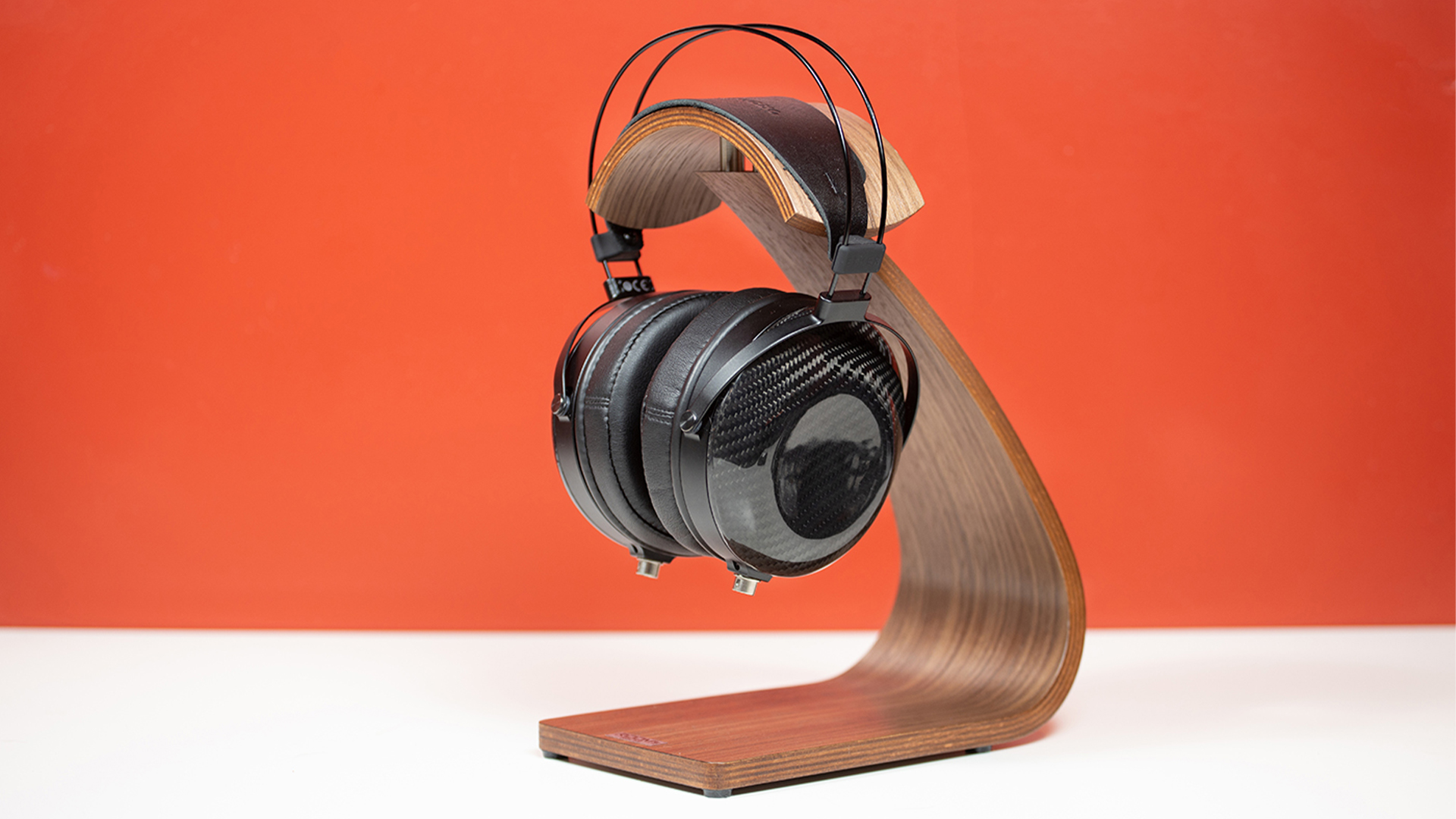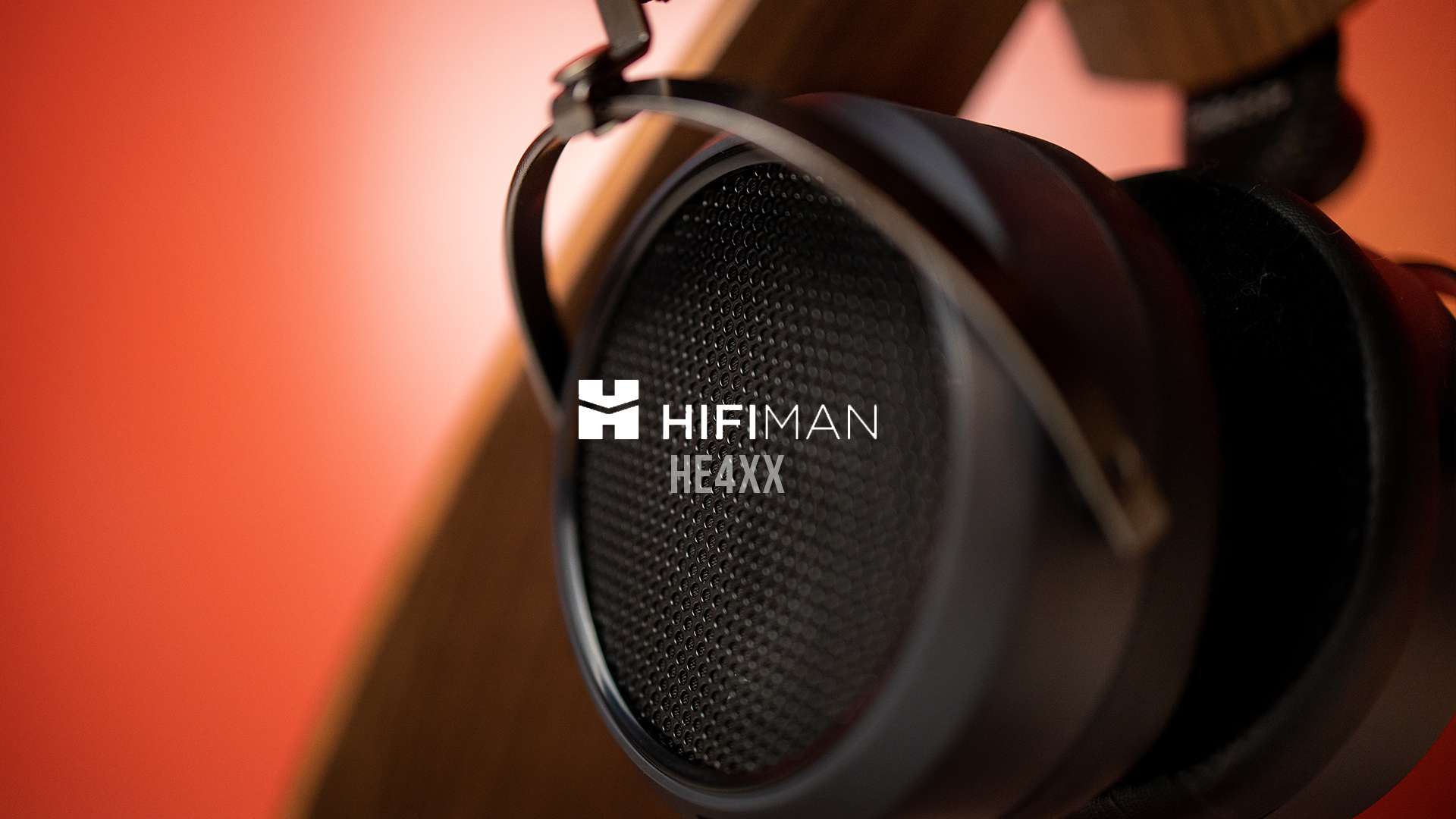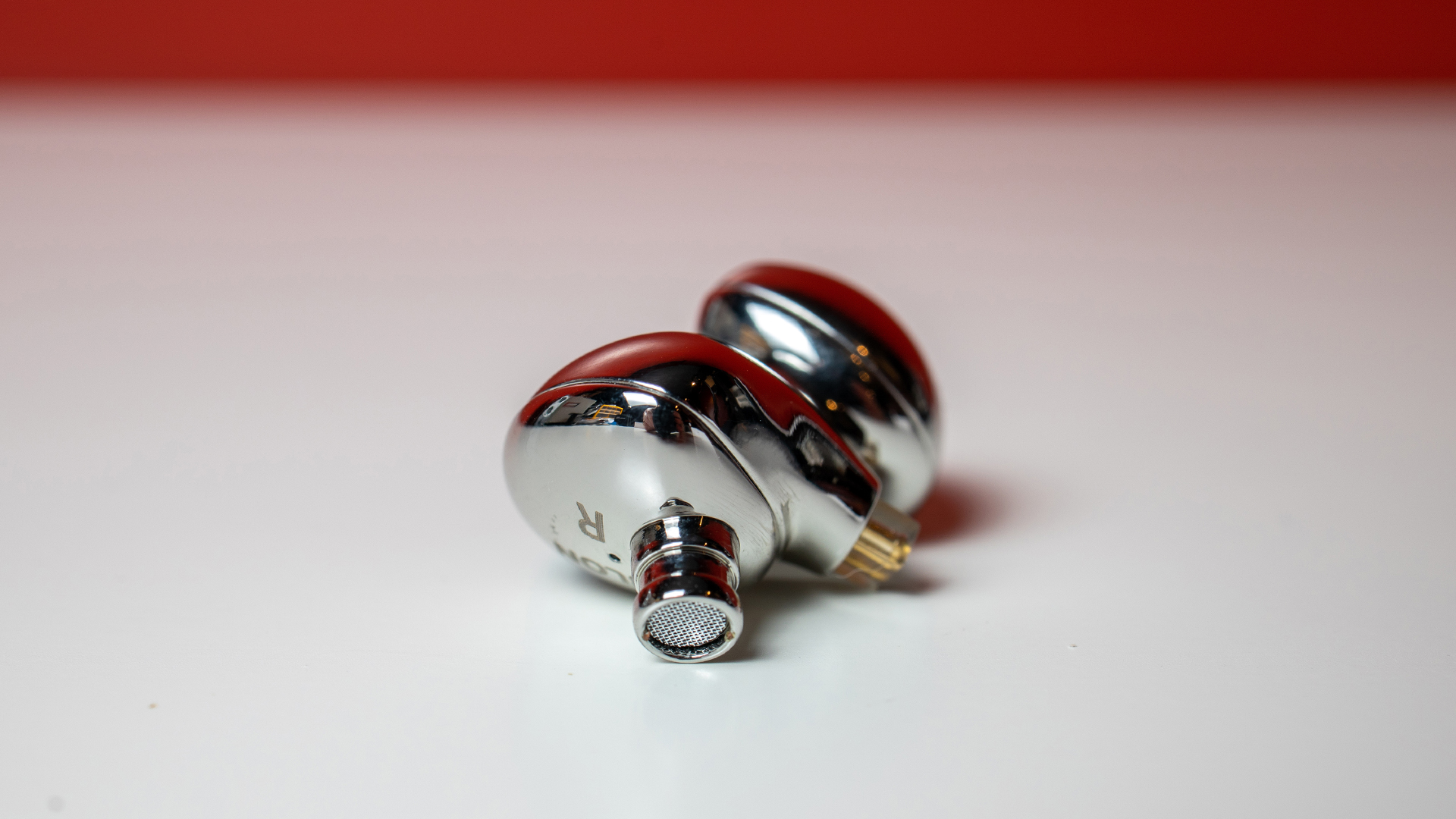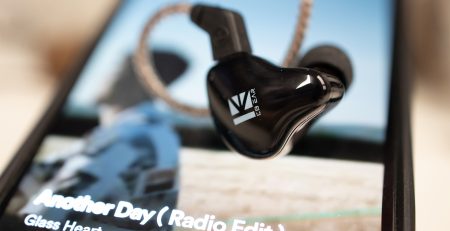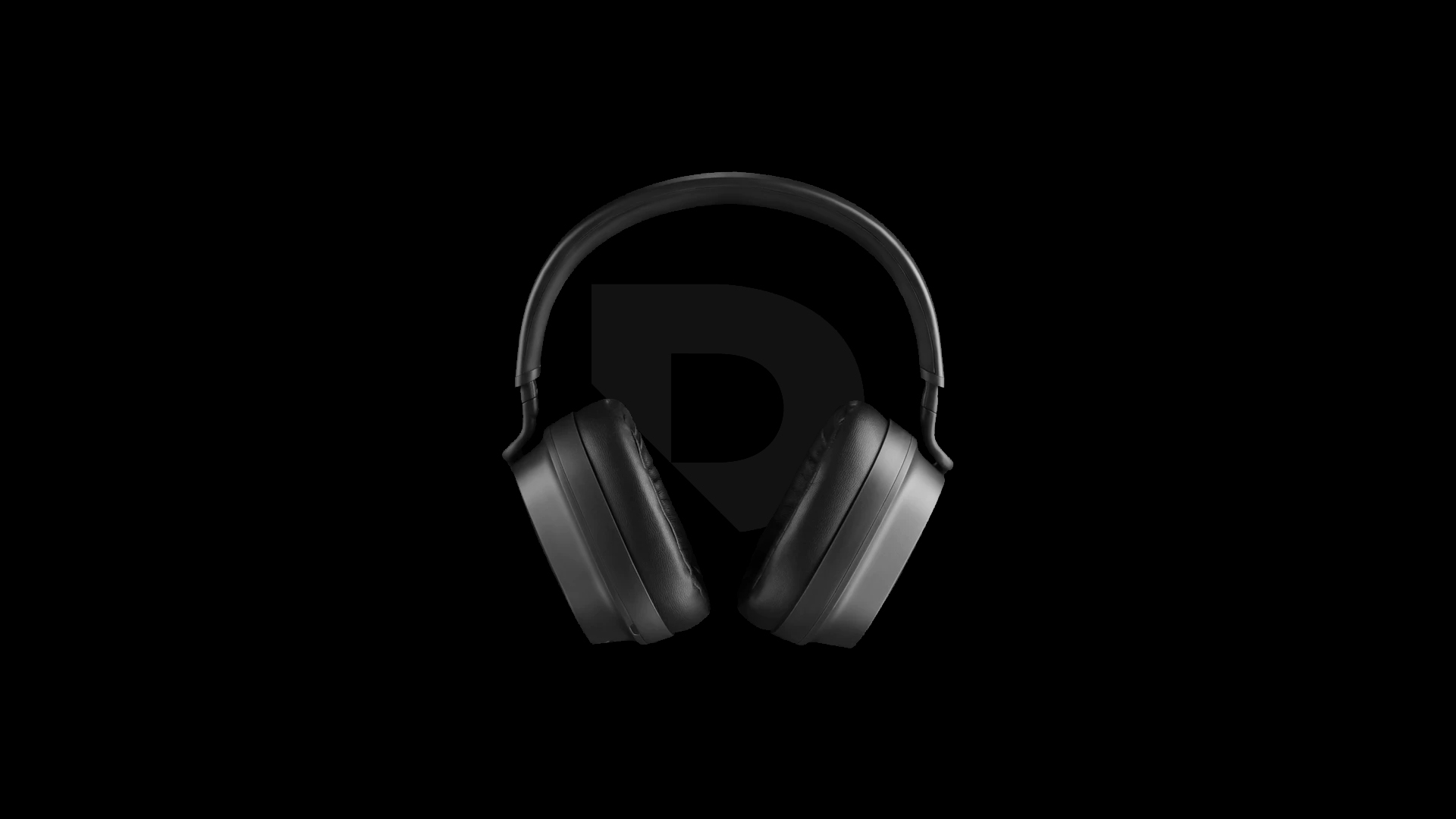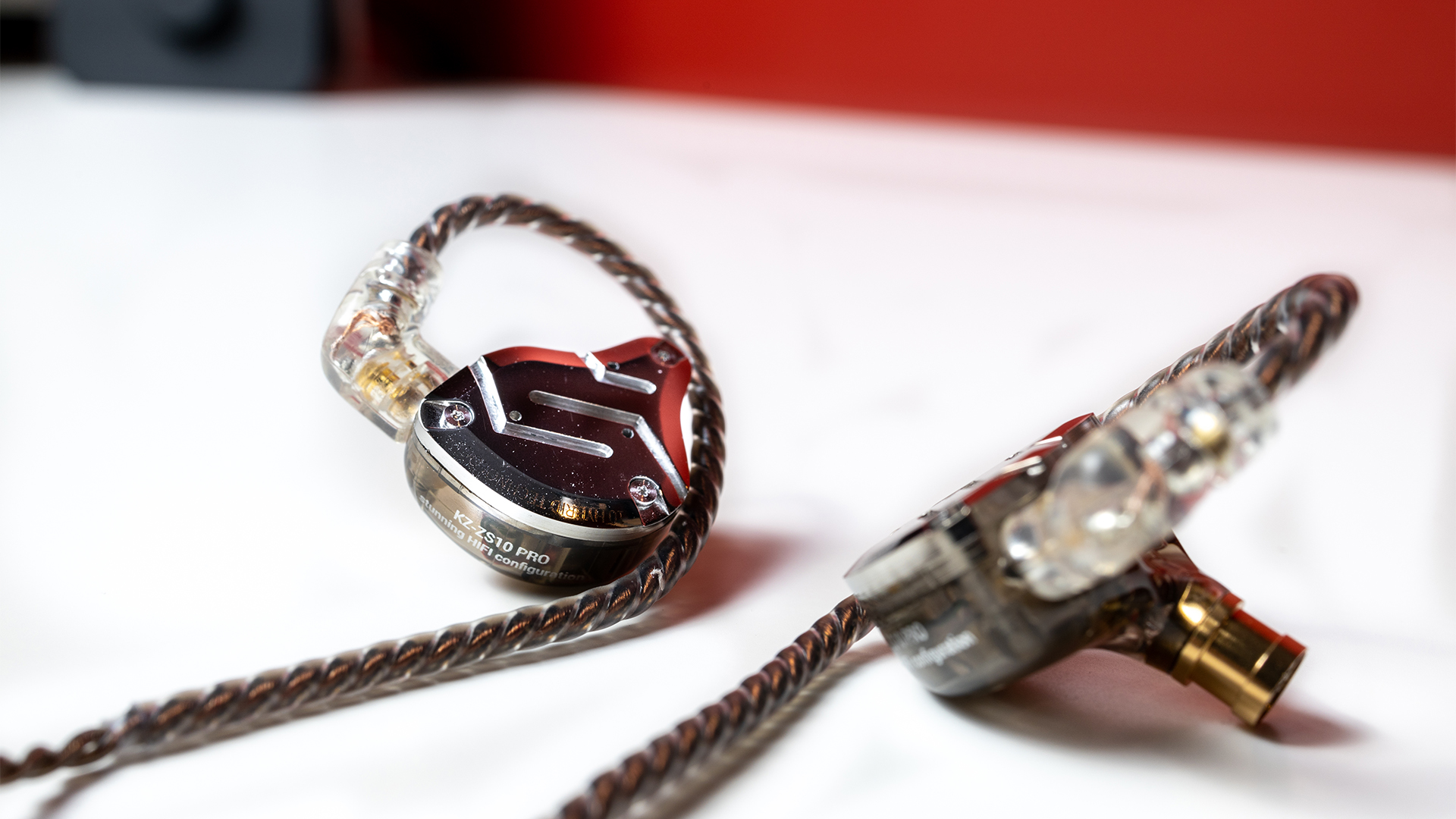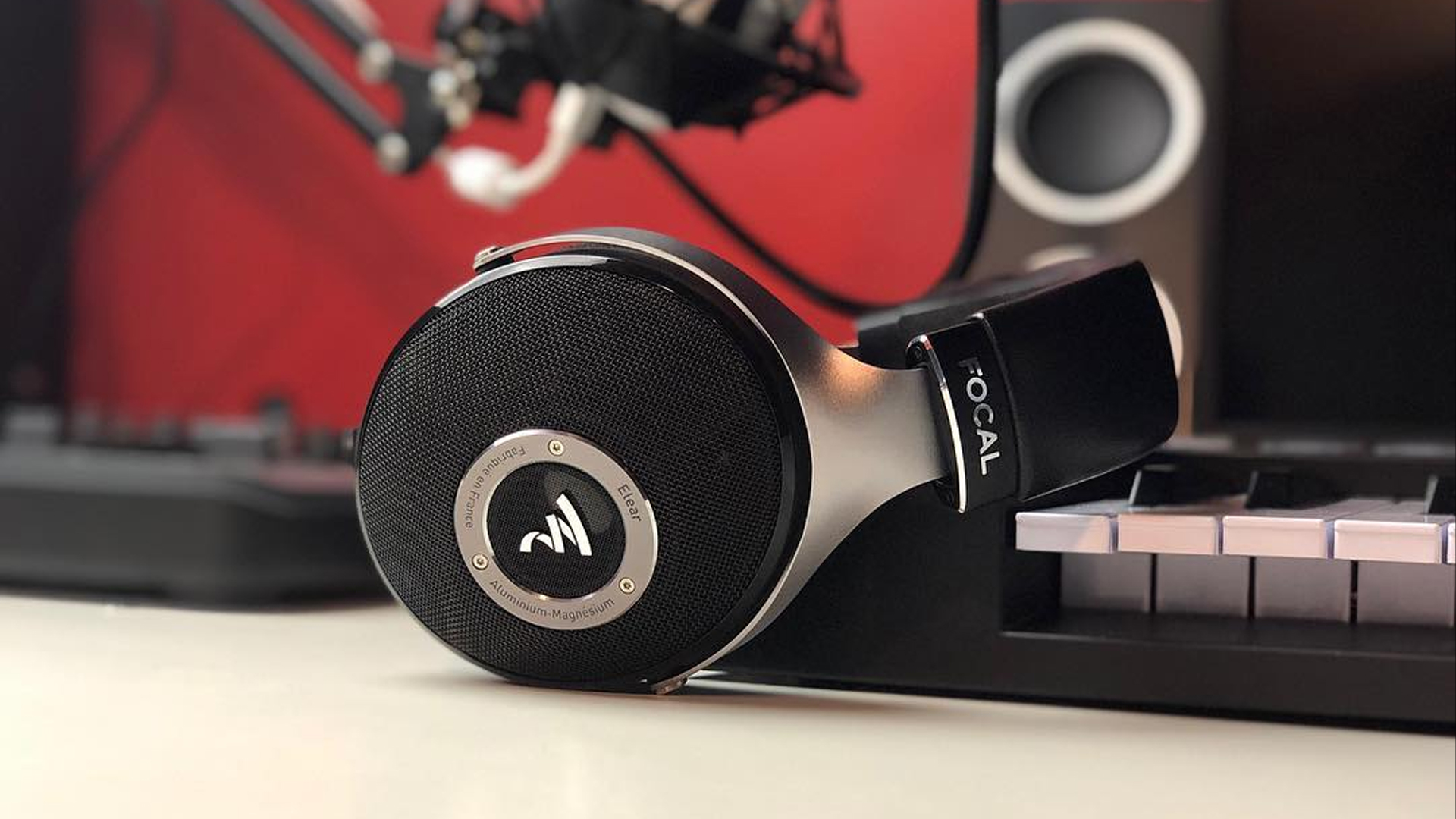Review: MrSpeakers Ether CX
When it comes to premium boutique headphones, no other brand stands out quite as much as MrSpeakers.
Well, what was MrSpeakers. The company is now known as Dan Clark Audio (named after its founder) and is a bespoke headphone maker from California. Everything the firm makes is focused solely on being upscale; premium planar magnetic and electrostatic headphones are its bread and butter.
So, naturally, when we had the opportunity to try out the Ether CX (the collaboration between MrSpeakers and Drop), we seized it.
First Impressions

The headphones arrived in a plain brown box; one of the cost cutting measures that helps lower the price tag of the CX to nearly half of its closest sibling. Inside is some literature, a single six foot cable, some small felt pads used for tuning, and the minimally constructed Ether CX.
As soon as you pull the CX from its resting place, you’ll realize how special it is. The cups are slick, finished in glossy raw carbon fiber with complementing metal touches and a black leather headband. The memory foam earpads are flat, meaning that you have to work a bit to get a good seal on your head.
Finally, you plug the headphone into your amp and press play on your favorite song. For me, that was the start of a disappointing few days.
Construction
The boutique nature of Dan Clark’s business means that everything is made in-house.
No, seriously. 3D printing for rapid prototyping, CNC milling, leather working, and assembly are all done directly at MrSpeaker’s HQ in San Diego, California (check out this 2018 tour to learn more). It’s a wildly in-depth operation and something that gives these every pair of headphones a unique, custom-tailored feel.
That being said, let’s talk about what to expect from the Ether CX.
The CX carries over the incredibly modern look from the popular Ether C series headphone, albeit with a few changes to the cup mounting hardware. Molded carbon fiber makes up the closed-back shell which houses planar drivers individually matched to ensure near-identical measurements from each channel. Sound eventually travels though the rectangular holes in the leather-wrapped memory foam pads and directly into your ears.
Move up the thin machined cup mount and you’ll find a rather simple headband which is constructed of a thin strip of leather and surrounded by two sprung nickel titanium (Drop calls it “NiTinol memory metal”) supports. While the cup itself doesn’t have a swiveling mechanism, the give in the band allows for the unit to conform easily to just about any noggin. Lastly, notice the small rubber slider which is used to control just how high the cups sit on your head.
One thing that I really liked about this set of headphones was the factory sleeved cable. I’m not a huge believer in snake oil cables being responsible for a significant change in sound, so know that this is more about the way that these cables designed.
On each cup sits a mini-XLR connector with a unique locking hirose design. Follow that to the other end and find a full size 4-pin XLR connector ready to plug in to a high-dollar amp. If you’ve got something that can handle that connection, there’s no need to buy a different cable after spending $900 on a set of headphones. For those that don’t have an XLR-capable amp, don’t fret. Included in the box is a simple ten inch section of cable that contains a XLR to 3.5mm TRS connector, plus a quarter-inch adapter.
Sound
Before I get into sound, I want to touch on how MrSpeakers includes a number of felt pads with varying thickness. The literature that comes with the Ether CX explains that these pads are used to fine-tune the sound of your new headphones. Specifically, they work by dampening the audio and allowing you to crank up the volume so that the headphones can emit a warmer sound with harder-hitting lows… or that’s the idea at least.
Installing the tuning kit is simple – pop off the stock ear pads and install the felt in front of the drivers. Here’s a photo with the pads off to help understand where they go:

In my experience, they definitely do warm up the signature by forcing you to crank up the volume (just as the manual explains), but it’s just not enough to change my feelings on the overall headphone.
Lows
I’m going to start with what I perceive the Ether CX’s weakest area to be: the low-end. Nothing really packs a punch anywhere in the low-end range, and that makes these headphones (for lack of better words) boring.
Complex and intricate drumming and low notes produced in Dance Gavin Dance’s Evaporate (Genre: Progressive, Swancore) usually hits fairly hard, but not with the CX. You hear the kick drum, but you just don’t feel it.
Normally I would give a comparison here with some sort of EDM to benchmark lows, but the genre simply wasn’t enjoyable as a whole with these cans. Even cranking up the volume with the dual-notch white pads installed (which are supposed to warm up the headphones and improve bass response), the CX can only be described as thin, lifeless, and cold.

Mids
If there was one word I could use to describe the mids produced by the CX, it would be “unnatural”.
Vocals and other sounds that are normally the point of attention in a recording feel recessed and out of focus. Similarly, the supporting background instrumentation is brought forward and becomes noticeable.
This is bittersweet, because songs like Slave’s True Colors (Genre: Post Hardcore) heavily rely on the frontman’s vocals which are drowned out. On the other hand, perhaps it’s one of the only things that I liked most about the Ether CX; it exacerbated quips in recordings which would have otherwise gone unnoticed.
Highs
The highs can be described as a mix between the lows and mids; both unnatural and boring.
Nothing is too sibilant to stand – far from it, actually. The same mix of recessed-yet-forward sounds have creeped its way into the listening experience. It doesn’t quite jumble the recording as it does to make a music confusing.
Sound stage
Closed-back headphones aren’t necessarily known for their sound stage. Many, many manufacturers attempt to emulate the wide, airy stage of an open-back set but fail miserably. Not the Ether CX.
Fire up Cage The Elephant’s Ain’t No Rest for the Wicked (Genre: Alternative, Indie) and you’ll be able to move guitar slides and twang around the stage in your head with ease.
To be clear, the CX doesn’t sound like an open-back. It does, however, do a good job of moving audio around to sound quite wide and sweeping; just don’t expect that stage to run deep. Despite the weird, unnatural mix of audio, you can still get a decent idea of where sounds are supposed to originate.
Clarity and Detail
In case you didn’t catch this in the section describing the mids, the Ether CX has a substantial amount of detail presented throughout the entire spectrum of sound.
While I wouldn’t call the detail “transparent”, I would note that these particular cans bring forward a lot of detail that you may otherwise not have heard.
Particularly, acoustic and classical music appear substantially more clear and obvious than they do in other closed backs.

Hear What I Hear
As always, you can listen to the Spotify playlist we use to test all of our headphones on the sidebar, or by clicking here.
Comfort, Use, and Portability
I found these to be quite uncomfortable to wear for even short periods of time. While the loose leather band and supports make for extreme portability, they exert a ton of pressure on the forward-most point of the pads. Specifically, the area around the upper cheekbones suffer for me. I haven’t heard this complaint from many other people, so perhaps my head just isn’t a good match for these cans.
The use of lightweight material like carbon fiber, thin leather, and NiTinol make these easy to wear on the go. While they are technically portable, would you really wear a set of $900 closed-backs like this outside? Even if you would, the stock cable makes it a bit more difficult, especially when you consider the XLR adapter being needed to plug into any DAP.
I would consider the ideal setting for these to be in your favorite listening room.
Nerd Notes
- Drivers: Planar Magnetic
- Style: Over-the-Ear, Closed Back
- Weight: 15.5oz (440g)
- Frequency response: 20 Hz–35 kHz
- Sensitivity: 92 dB
- Impedance: 23 ohms
- Plug: Hirose, “self-locking”
- Cable: 6.5-foot (2m), terminated in 4-pin XLR (3.5mm and quarter-inch adapter included)
Final Thoughts
Listen, I don’t want to hate these. I want to like them, especially because I love controversial headphones like the Focal Elear. And while I think everyone should have the opportunity to listen to a set of MrSpeakers (rather, Dan Clark Audio) headphones, I’m really not sure who these are aimed at.
These are botique headphones that will bring you botique (read: “different”) sound. But they’re also quite close to the kilobuck range, and that’s not exactly light on the wallet.
- Yes, they’re unique.
- Yes, they look pretty.
- Yes, there are better options out there for the price.
If you like the sound and were planning to pick up a set of $1,500 Ether C headphones anyway, then these are quite a good choice given the price break and similar sound. For anyone else, you may want to look elsewhere.
Where to Buy
The MrSpeakers Ether CX is a Drop exclusive, meaning that your only option of buying new is directly from Drop. At the time of writing, these can be had for $900.


